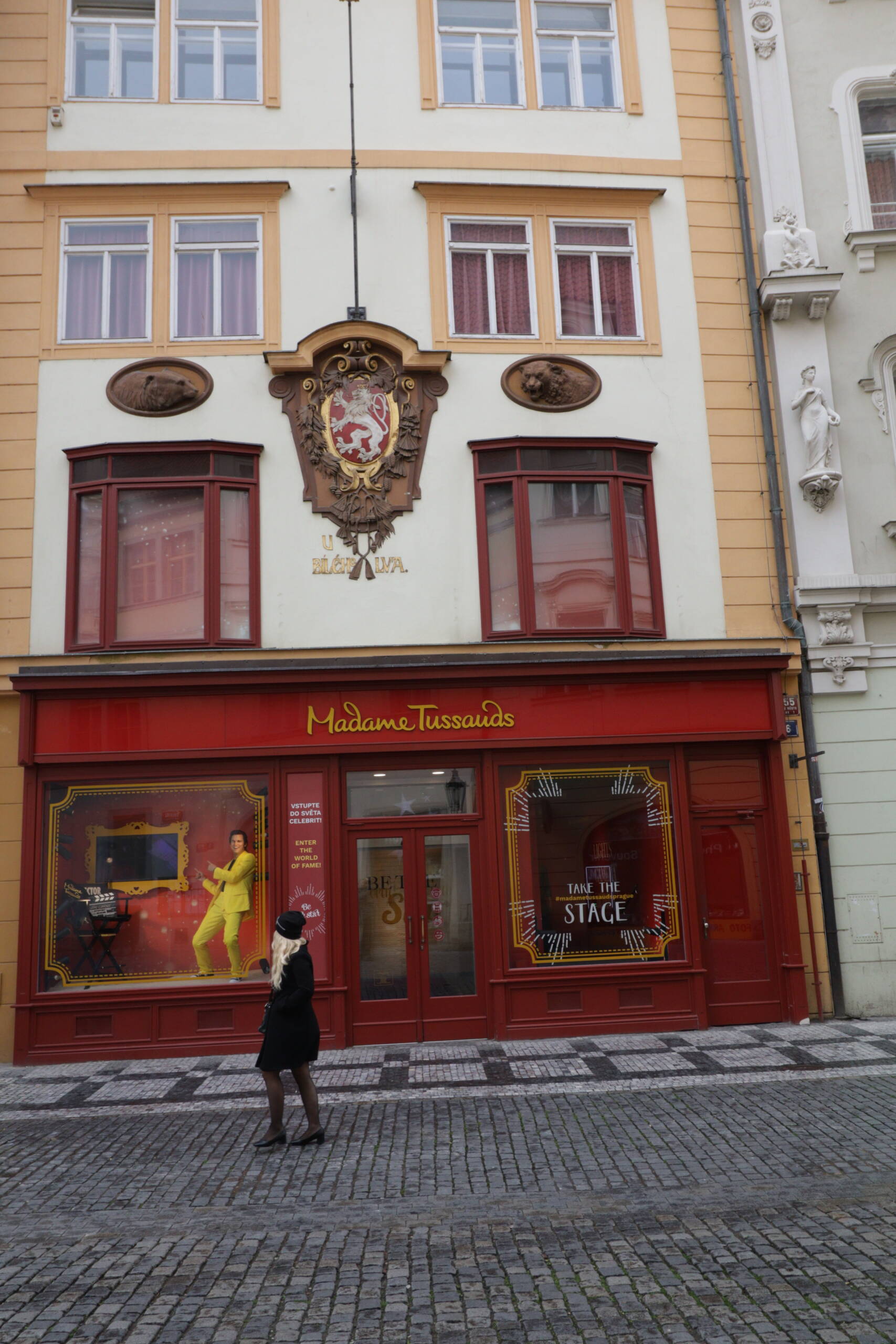There’s something almost cinematic about this street corner in Prague. The red-and-gold facade of Madame Tussauds catches the eye immediately, bright and glossy against the more subdued cream and ochre tones of the building. Above the entrance, the Czech lion in its ornate crest seems to look down disapprovingly on the parade of visitors shuffling past, as if unimpressed by all this modern spectacle below. The wax museum promises fame — the chance to “take the stage” — yet outside, reality feels slower, colder, more human.

A woman dressed all in black, her pale hair spilling from beneath a hat, steps briskly across the cobblestones. There’s a faint theatrical echo in her stride, but it’s unintentional — she’s not posing, just moving, just existing in a city that has learned to stage itself. On one side of the window, a mannequin version of Elvis Presley points gleefully toward a neon-framed mirror, inviting passersby into the world of artificial celebrity. On the other side, a sign urges: “Enter the world of fame.” The irony couldn’t be sharper. Here, on these centuries-old streets, where stone lions and baroque statues have outlasted empires, the promise of wax immortality feels strangely hollow.
And yet, this is what travel often becomes — a dance between authenticity and imitation. Prague, with its gothic spires and Renaissance façades, has been photographed to death, replicated endlessly in travel feeds. Tourists chase the same “authentic” moments and end up with identical pictures, each pretending to discover something that’s been rehearsed for them. The woman in the photo, perhaps unknowingly, stands in contrast to all that — not taking a selfie, not pausing before the glass, just walking past it all.
Don’t be that tourist, the street whispers. Don’t let your curiosity flatten into consumption. There’s more to this city than the red glare of Madame Tussauds or the idea of fame that lasts only as long as your memory card. Look up at the crest, the lion carved in relief, the faint shadow of history etched into these walls. That’s the real wax — the one time left behind, still holding its shape.
Leave a Reply